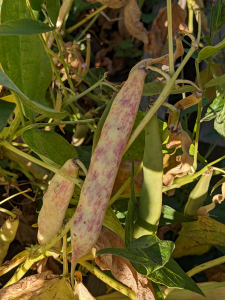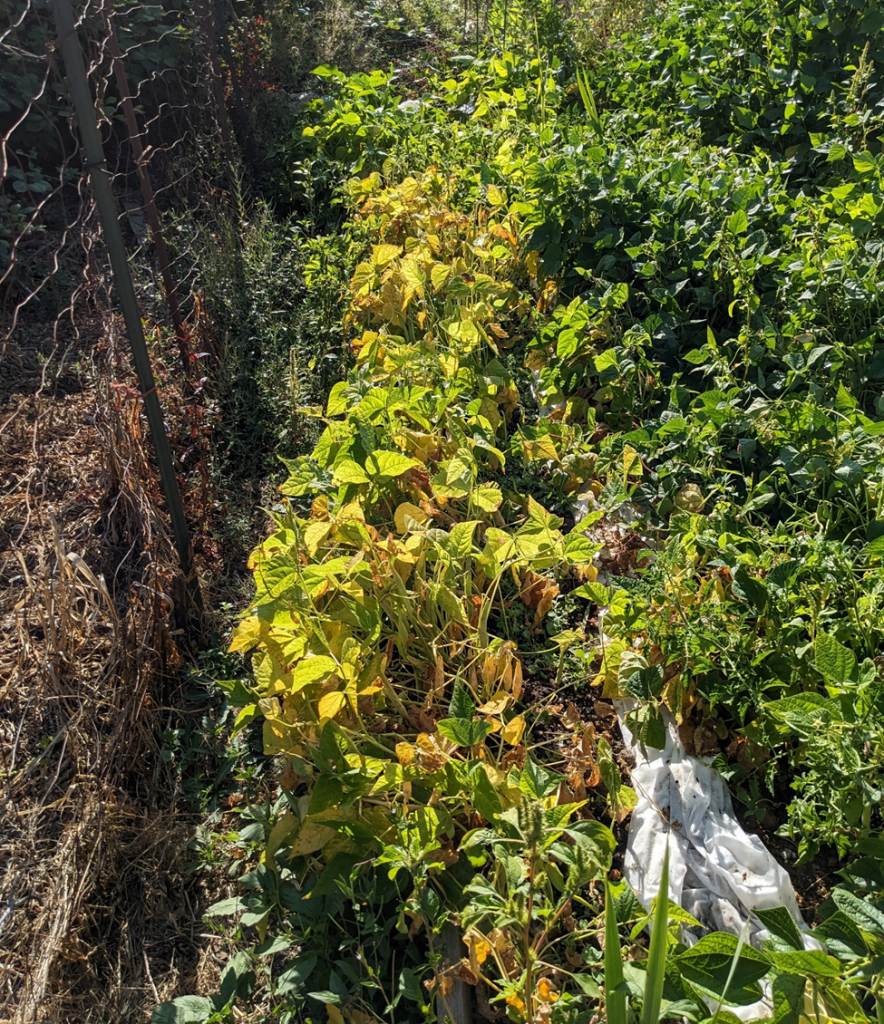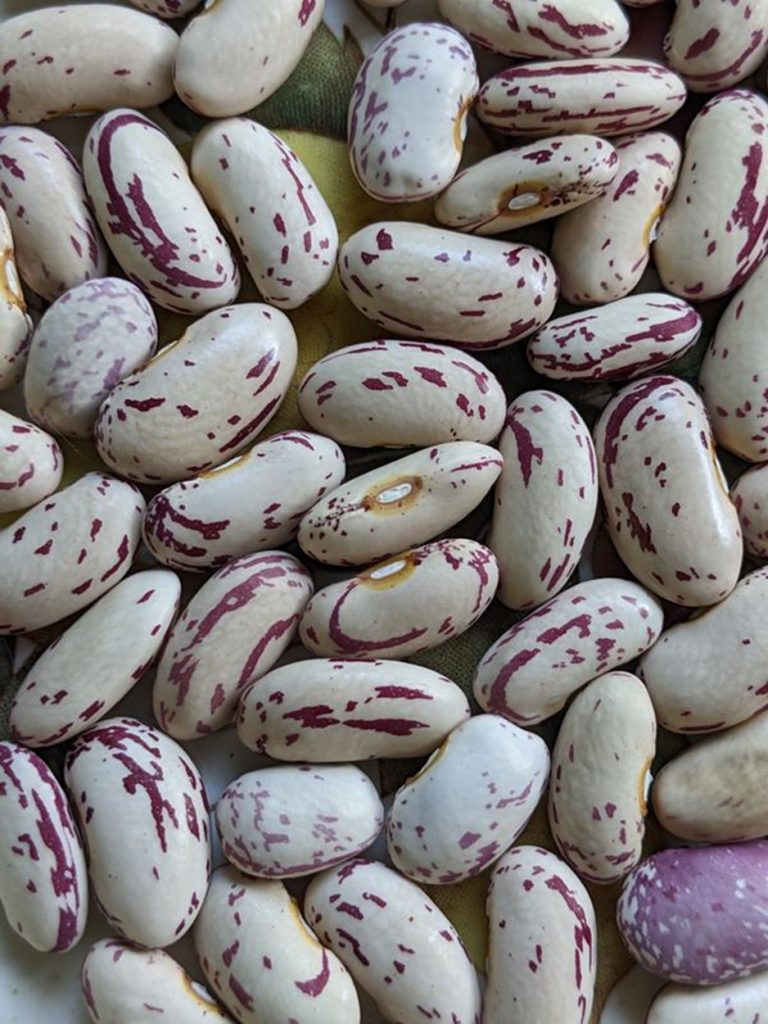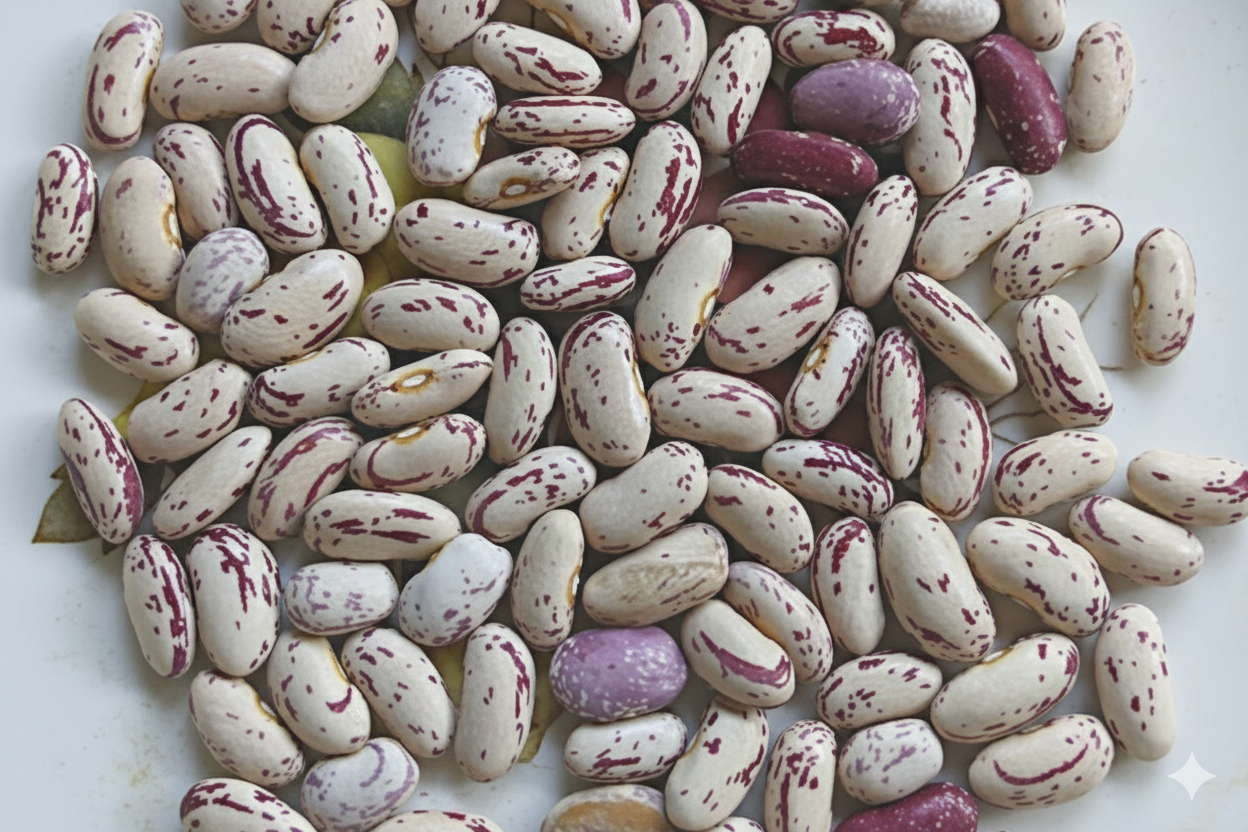People of the world’s regions and local areas often have their own specially developed vegetable varieties. Interestingly so do people of some ethnic or religious groups. More than a century ago the Doukhobor people of Russia came to Canada seeking peace and a place in which to live communally (https://doukhobor.org/). Eventually many of them settled in what we call the Kootenays of British Columbia (http://www.usccdoukhobors.org/historical/aboutdoukhobors.htm.), where they began to adapt to the mountain land and its fertile valleys. They did not believe in violence, and many felt that killing animals for food was a violent act, so the diet focused on vegetable-based foods, among them beans.

In the early 1900s, the use of beans by Doukhobor women was documented by photographers and writers Edith Watson and Victoria Hayward. We are fortunate to have obtained seeds of a Doukhobor bean from Dianne Luchtan, a resident of Balfour BC in the centre of the historic Doukhobor region of the West Kootenay of BC. Dianne has been growing and saving seeds in the West Kootenay region for more than 50 years. She received this bean from a grower in Winlaw BC.
Always on the look out for regional varieties we had no idea what this plant might be like. It turns out it is an early and productive dry bean variety with a long history in the region. Our Crop-Climate project is delighted to describe this bean and hope that it can be shared widely.
This type of Doukhobor bean is called “Talyanka” a name that applies to pole and bush bean varieties with identical seeds. Talyanka likely translates into a Russian version of “Italian”. We have traced this bean to Doukhobor elder Tina (Tena) Koozen (born Osachoff) of Appledale in the Slocan Valley and will call it Koozen drying bean 2 (Koozen drying) as described in the regional publication of seed varieties “Seeds of History: Giving our past a future” compiled in 2000 by Heidi McGregor (see https://www2.foodsecurecanada.org/sites/www2.foodsecurecanada.org/files/Seeds_of_HIstory_EarthMatters.pdf).
Koozen drying bean forms an erect bush from 45-70cm (average 60cm = 24”) tall with the tallest bushes beginning to sprawl. The plants are robust with a thick stem at the ground. Curiously the root seems rather shallow and small, spreading horizontally just below the surface. Pale pink flowers occur on the upper portion of the plants and develop into straight to slightly curved pods with a 1.5-2.5 cm (about 3/4”) long point.
Pods range from 11-15.5 cm (4-6”) long and are more or less rounded in cross section being about 1.1 cm (1/2”) thick. They are firmly attached when dry. Pods are faintly suffused to strongly marked by pale purple lines and split easily along the inside suture.
Typically, there are 4-5 slightly kidney-shaped and flattened seeds in each pod. Frequently the neck of the pod is empty or has one aborted seed. Some of the pods toward the tip of the flower stalk do not fill, but this may be avoided by having the plants on a low fence and watering regularly. The seeds are white, speckled in maroon spots and lines. The scar is elongated and surrounded by narrow orange to yellow orange zone. Seeds are generally of uniform size 1.5 cm (2/3”) long, 0.9 cm (1/3”) high and 0.6-0.7cm (1/4”) thick.



I have observed growth of Koozen drying beans in two typical weather years. In 2023 old seeds sown on June 5 were fully germinated by June 26 and in third leaf by July 12. On July 20 plants were covered in flowers, and the first tiny pods were visible. Full-size pods covered the plants by August 6 which dried and were harvested between August 29 and 31. In 2025 from an early May 1st sowing all seeds sprouted by May 18 and were growing strongly by May 24. Many buds and the first flowers were visible June 14. Flowering continued until July 4, by which time many flat pods had developed. Plants had yellowed and carried yellowing pods by July 29. Within a few days 30% of the pods were dry and the plants were pulled and pods harvested August 7 at which time most of the pods were dry.
From a June 5 sowing in 2023, the crop was ready to harvest in 86-88 days. From an earlier May 1 sowing in 2025 about 97 days were needed to mature the dry beans. The longer interval occurred mainly in the time it took plants to flower from the earlier sowing. The yield based on 2025 planting was 0.20kg per metre (0.14lbs/foot) of row.


According to Seeds of History, Koozen drying 2 appears to have been first grown in the Slocan Valley as early as the 1920s. It was noted to be “mildew, mold, and wilt resistant, an early variety produces well in cool, wet, short growing seasons”. The variety was grown and provided by Tina Koozen at a local seed exchange in 1993. Its suitability for soup is mentioned specifically.
Talyanka variety beans like Koozen drying have long been used in Doukhobor cooking. The first British Columbia Doukhobor cookbook (Practical CookBook: Selected Doukhobor and Quaker Recipes) was compiled in 1957 by Laura Verigin and Zoe Gulley and contains a comprehensive recipe for bean soup. The recipe combines vegetables, Italian beans (specifically identified) and two forms of potatoes (mashed and cubed), with lots of butter into a rich creamy soup. Walter and Vera Kanigan have been growing a garden since 1963 in the Doukhobor community of Ootischenia near Castlegar and making this soup. You can read more about growing and cooking with Talyanka type beans by Doukhobor people here: https://heritagepotato.ca/heritage-beans/nourishment-and-peace-soup-beans-and-gardens-in-the-kootenays-of-british-columbia/
Despite the presumed Italian roots, Talyanka beans have been a mainstay of the Doukhobor people of British Columbia for many decades and are well suited to its climate. The Koozen dry bush form grows and yields well and most importantly early. Try this Canadian heritage bean in your garden and honour those who believe in peace and community.

